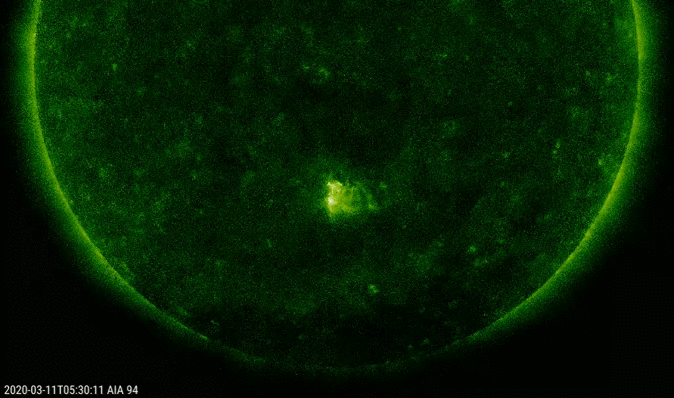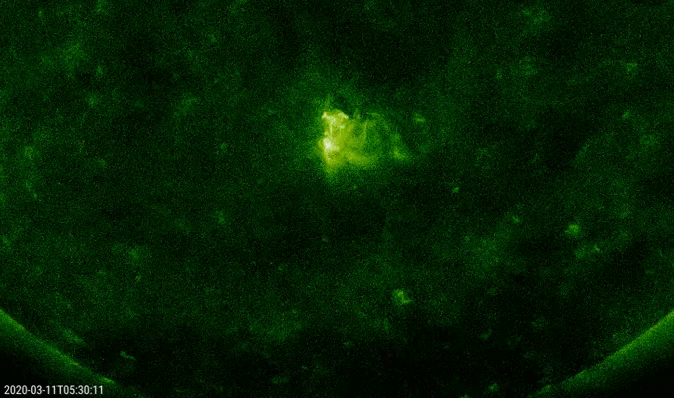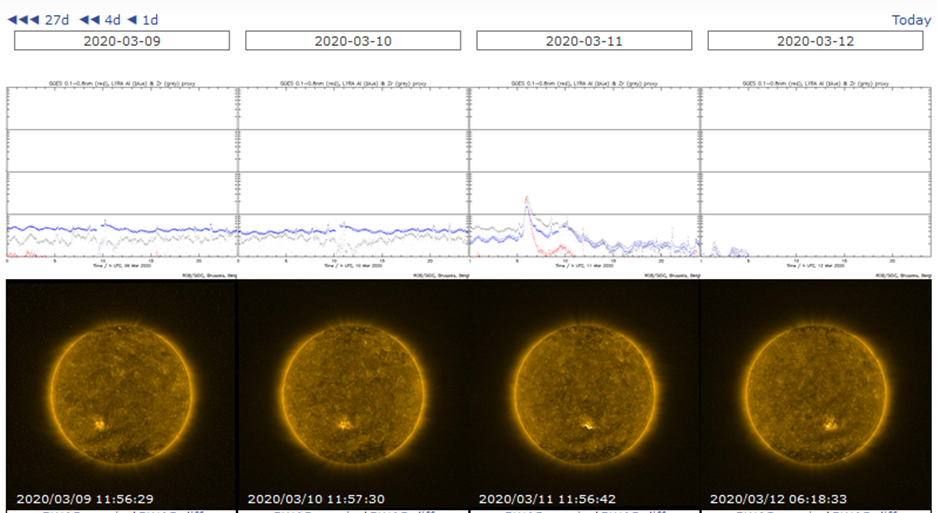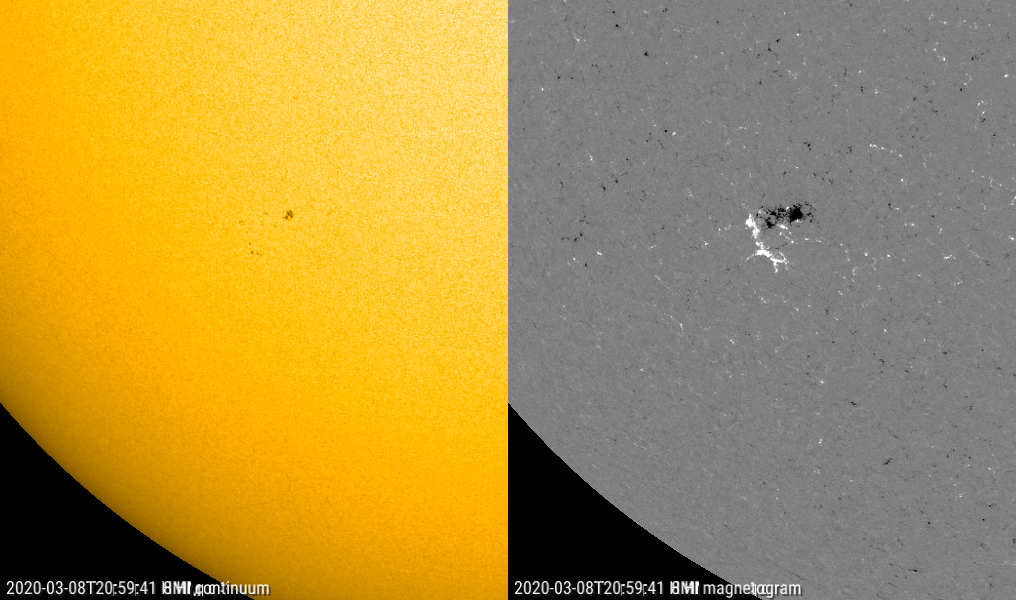The most recent C-class flare dates already back from 15 May 2019. With nearly 300 days and counting, this period without C-class flares shatters the previous record when no such flares were seen from 3 April till 3 November 2008 (213 days). Similar story with the M-class flares ("M" as in medium; 10 times stronger than a C-class flare), with the latest recorded on 20 October 2017. This ongoing lapse of more than 870 days is much longer than the previous record (25 March 2008 - 19 January 2010) of 664 days. We're going through a deep solar cycle minimum indeed.


In absence of their bigger brothers, space weather (SWx) forecasters have to indulge their appetite for solar flares by looking for the kiddies of the family: the B-class flares. These are even 10 times weaker than the ones from the C-class. On top of that, as this minimum is so deep, even these baby-flares have become rare. Under these conditions, the observation of a B-class flare on 11 March put a smile on the face of every SWx forecaster. This x-ray flare reached a maximum of B2.3 at 05:56UT and had its source in active region (AR) NOAA 2758. See SDO's imagery in extreme ultraviolet (EUV) above (SDO/AIA 94). The screen-shot underneath shows, from 9 till 12 March, the daily UV measurements by PROBA2 (top; LYRA instrument) with a small spike on 11 March (B2 flare), while the bottom row has an image in EUV for each day around noon (bottom; SWAP) showing the transit of active region NOAA 2758 as a somewhat brighter area over the solar disk. Data and movies are available at the website of the PROBA2 Science Center.

NOAA 2758 gathered a few sunspots on 8 and 9 March, but remained quiet at that time. It's also a member of the new solar cycle 25, in view of its high southern latitude (-32 degrees) and correct magnetic polarity (see the SDO/HMI imagery underneath). The appearance of NOAA 2758 ended a stretch of 35 consecutive days with no sunspots. That's almost as long as the longest spotless stretch so far this solar cycle transit (40 days), from 14 November till 23 December 2019 (See SILSO's Spotless Days page).






